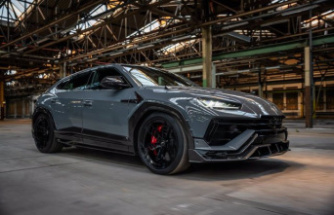Readers often complain that I do not know what I am talking about, and they must be right. After all, when I first wrote about the SolaRoad, a bike lane with embedded solar panels, I noted that “I still find it hard to think of a worse place to put solar panels than in the road, except perhaps in my basement floor.”
Then I covered how Dutch solar bicycle lane generating more power than expected and clearly still didn’t get it, writing “it still makes absolutely no sense at all.”
Then in my last post, Solar bicycle lane's first year is "a great success" I still clearly didn’t know what I was talking about, saying that it defies logic, and concluded “OK, they have proven that they can do it. They still have not proven that it makes any sense.”
Now Rogier van Rooij writing in CleanTechnica, tells us that the Dutch Solar Bike Path SolaRoad is successful and expanding. According to a press release, they have added 20 meters (66 feet) with new panels "better tailored to application in pavements. The elements no longer have a glass top layer. Two of the elements have thin-film solar cells embedded." This is promising. Rogier writes (and may be referring to the press release I quoted in my earlier post)
© SolaRoad
Despite the difficulties paired with embedding solar panels in a road, such as the flat angle in which the modules are positioned, the thick layer of protection glass covering them, and the high numbers of travellers passing over and blocking the sun, the amount of power generated quickly defied expectations. Already half a year after the cycle lane was inaugurated, SolaRoad sent out a press release stating that, with 3000 kWh generated, the solar panels were outperforming the 70 kWh annual per square meter expected threshold set in the lab. In its first year, the SolaRoad produced 9,800 kWh, roughly equivalent to the annual average consumption of three Dutch households.
THREE HOUSEHOLDS! and those are small penny pinching Dutch households, for only US$3.7 million. This is why I have been negative, it is a ridiculous cost that could power ten or twenty times as many houses if it was on roofs, or even on a canopy covering the bike rack. But Commenter Bill, responding to my last post, has a point:
I don't understand the unrelentingly negative tone of your articles about this topic - it feels a bit like you're just looking for a journalistic niche. Do tell us the negatives, certainly, but at least allow space for describing why folks thought this tiny demo made sense: what they learned; how materials worked; what upscaling and increases in panel efficiency might accomplish. In other words, give us readers the tools to think about this project instead of feeding us opinion. Please?
© Solaroad
Bill is right, there is no need to be so negative all the time. The new configuration without glass is an improvement. Rogier also points out some positive attributes and outcomes:
Although per kWh cost figures are unknown, it is very likely that the electricity produced by the SolaRoad is relatively expensive, especially due to the small scale and novelty of the project. Surely, it cannot compete with normal solar power generation, such as from rooftop solar and solar farms, but the point is that such solar bike paths compete with the cost (and no direct revenue) of conventional bike paths, not other solar installations. As research continues and enthusiasm coming from many different sides accrues, larger-scale projects could emerge, and we could get a better sense of how viable this idea is. Economies of scale would drive down costs, and suddenly, solar bike paths could no longer be a curiosity. Maybe.
Maybe. Rogier suggests that a decade into the future, most roof space might already be covered and that we might need the bike paths. I hope also that as research continues, solar panels will get cheaper, more efficient, integrated into facades and shingled roofs (Like Tesla is doing) and get put everywhere that is actually in the sun. And that list will probably still not include bike lanes.
Our editors found this article on this site using Google and regenerated it for our readers.













